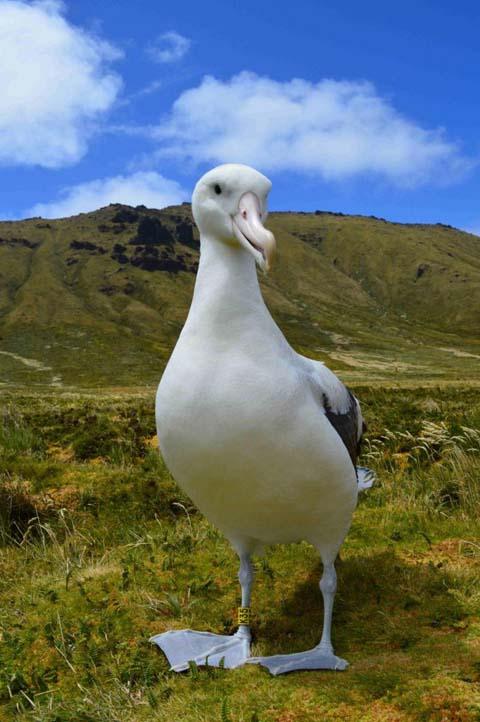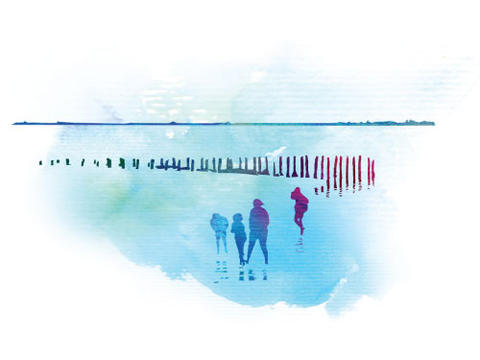
Remotest Island on the World cooperates with Wadden Sea
The administrator of the Tristan da Cunha Archipelago visited the Common Wadden Sea Secretariat to explore possibilities for a stronger cooperation in the framework of the UNESCO World Heritage Marine Programme.
The administrator of the British archipelago in the South Atlantic, Tristan da Cunha, Alex Mitham, visited the Common Wadden Sea Secretariat in Wilhelmshaven. This was done in the framework of the UNESCO World Heritage Marine Programme which facilitates the exchange between all 46 marine World Heritage sites, the "Crown Jewels of the Ocean", such as the Great Barrier Reef, the Galapagos, the High Coast/Kvarken (Sweden/Finland), Western Norwegian Fjords, Phoenix island or Papahānaumokuākea (Hawaii).
"The long experience of the Trilateral Wadden Sea Cooperation in managing a marine site is a good example also for other sites” say Alex Mitham, "Tristan da Cunha is keen to learn from other UNESCO programmes.The overall coordination and communication structure that I have seen here would be an excellent base to work from for our own needs. While our UNESCO sites may be thousands of miles apart, unfortunately we are all afflicted by similar threats to our unique habitats. It will be vital for all of us to work together in the future, unifying our approaches to tackling and mitigating the risks to our ecosystems".
Two islands of the Tristan da Cunha archipelago, Gough and Inaccessible, have been inscribed on the World Heritage list in 1995 because of their exceptional biodiversity and endemic species. The World Heritage property is located in the south Atlantic, is one of the least-disrupted island and marine ecosystems in the cool temperate zone. The spectacular cliffs of Gough and Inaccessible Islands, towering above the ocean, are free of introduced mammals and home to one of the world’s largest colonies of sea birds.

The Tristan albatross (Diomedea dabbenena) is a large seabird from the albatross family which only occurs on Gough island. One of the great albatrosses of the genus Diomedea, it was only widely recognised as a full species in 1998 (Photo: Alex Mitham).
Gough Island is home to two endemic species of land birds, the gallinule and the Gough rowettie, as well as to 12 endemic species of plants, while Inaccessible Island boasts two birds, eight plants and at least 10 invertebrates endemic to the island.
Although both sites are quite different they share common goals and face similar challenges, for example, management issues regarding climate change, shipping, tourism, and invasive species. On Gough Island, some of the endemic species such as the wandering albatross is critically endangered because of predation by small mammals.
After a visit at the Secretariat and the World Heritage visitor centre in Wilhelmshaven, the visit was concluded with a short excursion to the Jade Bay.
"The exchange with other marine World Heritage sites is extremely valuable" says Jens Enemark, Head of the Common Wadden Sea Secretariat, "Through this we can support each other to strengthen management and protection of the most important nature sites worldwide, and at the same time, raise our profile nationally and internationally"
After the visit, both sites agreed to continue the exchange in the framework of the World Heritage Marine Programme and invite Tristan to join the network of marine and coastal World Heritage sites in Europe.
More about "Gough and Inaccessible Islands": http://whc.unesco.org/en/list/740/
More about the World Heritage Marine Programme: http://whc.unesco.org/en/marine-programme/

